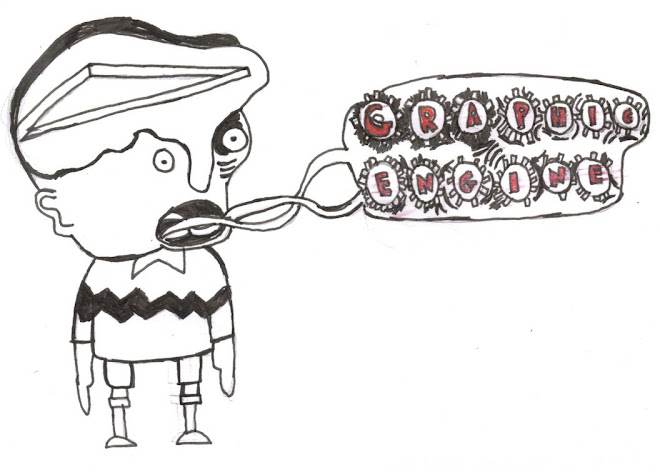
By now I've pretty much exhausted the comics section of my local library except for some incomplete volumes of classic manga and a graphic biography of Charles Darwin but every now and then I pick up something suprising like Dead in Disemboque, a comic book written by author and musician Robert Araellano and with each chapter of the book done by a different artist This book is inspired by the hugely popular pocket sized Mexican comics (historiete) which is something I instantly want to know more about. Two of the chapters are visually mediocre at best, the second chapter being competent in ability but not really interesting stylistically. It is the first chapter of the book, done by William Schaff, which really knocks me out. Best known for
 his album covers for bands like Godspeed You Black Emperor! William Schaff hasn't really dabbled too long in the world of comics, but is one of those artists who has tried his hand at everything. On his Flicker profile he says that he wasn't so much interested in the narrative qualities of comics as he was in making every page a work of art, and this is something he has achieved while still not interrupting the narrative flow too much (although his is the chapter in the book that uses the highest level of Spanish dialogue, leaving gaps for the non fluent reader). His visual style is a mix of collage, scratchbook art, and dark inky surrealism with a distinctly Mexican flavour to reflect the setting of the book. One website compares him to the German expressionism of Otto Dix, George Grosz, and Max Beckmann, but I can see traces of the German expressionist woodcuts and the early woodcut novels of Fran Marsereel, Lyn Ward etc. At his worse Schaff's artwork ever so slightly resembles the kind of rockabilly illustration that you'd
his album covers for bands like Godspeed You Black Emperor! William Schaff hasn't really dabbled too long in the world of comics, but is one of those artists who has tried his hand at everything. On his Flicker profile he says that he wasn't so much interested in the narrative qualities of comics as he was in making every page a work of art, and this is something he has achieved while still not interrupting the narrative flow too much (although his is the chapter in the book that uses the highest level of Spanish dialogue, leaving gaps for the non fluent reader). His visual style is a mix of collage, scratchbook art, and dark inky surrealism with a distinctly Mexican flavour to reflect the setting of the book. One website compares him to the German expressionism of Otto Dix, George Grosz, and Max Beckmann, but I can see traces of the German expressionist woodcuts and the early woodcut novels of Fran Marsereel, Lyn Ward etc. At his worse Schaff's artwork ever so slightly resembles the kind of rockabilly illustration that you'd  associate with bad tattoos and Sailor Jerry Rum, but for the most part it's stunning. I'm also a big fan of his calculated imperfections. The fact that you can see quite clearly where he has cut out and pasted the images adds a certain charm to it, and his sudden transition in the final panel of the second to last page to the kind of drawing style you'd see attached to a fridge by a proud mother, is done skillfully (not like the pretense and pretending of Paper Rad, which I will probably come to rant about at a latter date) and acts as a useful full stop to the pace of the chapter.
associate with bad tattoos and Sailor Jerry Rum, but for the most part it's stunning. I'm also a big fan of his calculated imperfections. The fact that you can see quite clearly where he has cut out and pasted the images adds a certain charm to it, and his sudden transition in the final panel of the second to last page to the kind of drawing style you'd see attached to a fridge by a proud mother, is done skillfully (not like the pretense and pretending of Paper Rad, which I will probably come to rant about at a latter date) and acts as a useful full stop to the pace of the chapter.To see more of William Schaff's art, visit his Flicker profile here.







Thanks for the write up! Glad you enjoyed the work.
ReplyDelete